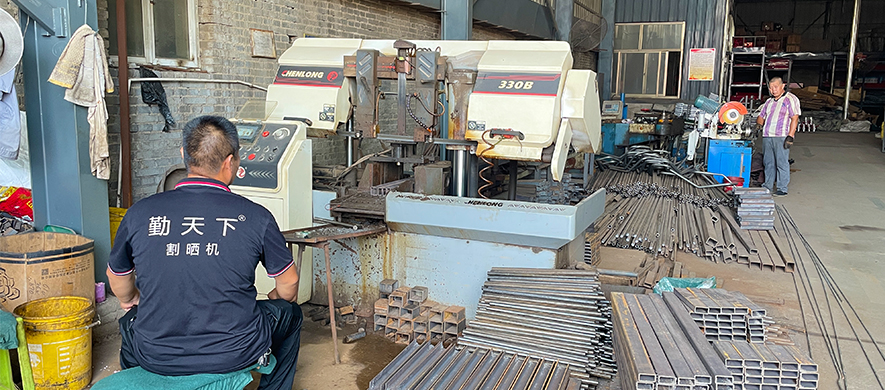Forage Plot Harvesting Techniques for Efficient Crop Management and Yield Optimization
The Role of Forage Plot Harvesters in Modern Agriculture
In the ever-evolving field of agriculture, precision and efficiency are paramount. As farmers and agricultural scientists strive to maximize crop yields while minimizing resource expenditure, one tool stands out the forage plot harvester. This remarkable machine plays a crucial role in the cultivation and analysis of forage crops, providing valuable insights into their growth, yield potential, and nutritional value. This article explores the significance of forage plot harvesters in agricultural research and practice, highlighting their features, benefits, and impact on the industry.
Forage crop research serves as a cornerstone for improving livestock nutrition and ensuring food security. It includes a wide range of activities, such as evaluating different varieties of grass and legumes, studying their growth patterns, and measuring their nutritional profiles. To conduct such research effectively, scientists require a reliable method for harvesting and analyzing these crops. Enter the forage plot harvester.
Forage plot harvesters are specialized machines designed to cut, collect, and process small plots of forage crops. Unlike traditional harvesters that are built for large-scale operations, forage plot harvesters are compact and precise, allowing researchers to harvest samples from plots that may only be a few square meters in size. This ability is essential for experimental work where small-scale trials are often necessary for testing new crop varieties or cultivation techniques.
One of the most significant advantages of using forage plot harvesters is the precision they offer in the harvesting process. With adjustable cutting heights and calibrated mechanisms, these machines can ensure a consistent and accurate cutting process. This uniformity is critical when collecting samples for analysis, as it helps eliminate variability that may skew research results. Additionally, many modern forage plot harvesters come equipped with advanced technology, including GPS guidance and data collection systems, further enhancing their accuracy and efficiency.
forage plot harvester

Moreover, forage plot harvesters significantly reduce the time and labor required for harvesting forage crops. Traditional methods, such as manual harvesting with sickles or scythes, are labor-intensive and can be prohibitively time-consuming. In contrast, forage plot harvesters can swiftly cut and process large amounts of biomass, enabling researchers to focus on analysis rather than laborious harvesting. This efficiency is particularly important during peak growing seasons when timely harvesting can impact the overall quality and yield of the crops.
The impact of forage plot harvesters extends beyond research settings. As forage crop management becomes increasingly important for sustainable livestock production, farmers are beginning to adopt these machines for their own operations. The ability to efficiently harvest and analyze forage quality allows farmers to make informed decisions regarding pasture management and livestock feeding strategies. Improved forage quality translates directly into better animal health and productivity, underscoring the significance of forage plot harvesters in promoting sustainable farming practices.
Furthermore, the use of forage plot harvesters aligns with the growing emphasis on data-driven agriculture. In an era where big data and analytics are shaping farming strategies, forage plot harvesters provide vital data on crop performance. By integrating data collection capabilities, these machines allow researchers and farmers to monitor growth rates, assess biomass yields, and evaluate nutritional content in real-time. This information can be aggregated and analyzed to inform future planting decisions, thereby facilitating continuous improvement in agricultural practices.
In conclusion, forage plot harvesters are indispensable tools in contemporary agriculture. By combining precision harvesting with advanced data collection capabilities, these machines play a crucial role in the research and development of forage crops. They enhance the efficiency of experimental trials, minimize labor requirements, and support sustainable livestock production. As the demand for food continues to rise globally, the importance of understanding and optimizing forage crops will only grow, making forage plot harvesters a vital component of the modern agricultural landscape. Embracing these innovations paves the way for a more sustainable, efficient, and productive agricultural future.
Latest news
-
When to Upgrade Your Old Forage HarvesterNewsJun.05,2025
-
One Forage Harvester for All Your NeedsNewsJun.05,2025
-
Mastering the Grass Reaper MachineNewsJun.05,2025
-
How Small Farms Make Full Use of Wheat ReaperNewsJun.05,2025
-
Harvesting Wheat the Easy Way: Use a Mini Tractor ReaperNewsJun.05,2025
-
Growing Demand for the Mini Tractor Reaper in AsiaNewsJun.05,2025
